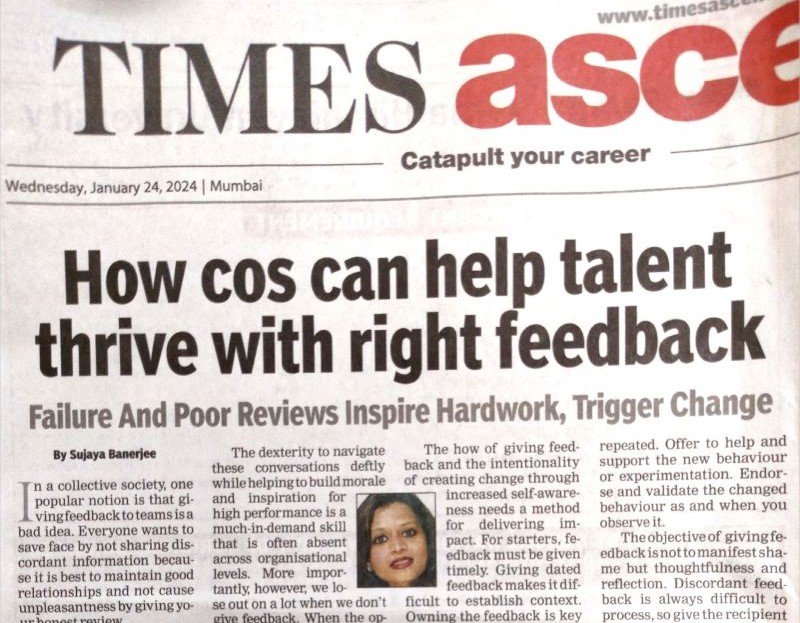Failure And Poor Reviews Inspire Hardwork, Trigger Change
In a collective society, one popular notion is that giving feedback to teams is a bad idea. Everyone wants to save face by not sharing discordant information because it is best to maintain good relationships and not cause unpleasantness by giving your honest review.
In a circuitous way, for one reason or another, both giving and receiving feedback are considered uncomfortable and stressful acts. In fact, the term feedback is associated with negative discordant information, and within many organisations, reactions to the word vary from trepidation and fear to denials. So it is not surprising that there are several cultures where it is common to never give or receive any feedback whatsoever.
Feedback can be contextual — related to performance, behaviour, personal-effectiveness, or personal-development — and can be offered to both individuals and teams.
The dexterity to navigate these conversations deftly while helping to build morale and inspiration for high performance is a much-in-demand skill that is often absent across organisational levels. More importantly, however, we lose out on a lot when we don’t give feedback. When the opportunity to expand self-awareness around blind spots is missed, we miss out on the development of mature talent for higher levels and in turn, also fail to inspire continuous improvement for growth.
Some even think that negative feedback can create stress and low safety for the recipient. Research negates this notion to prove instead that those who receive poor feedback work the hardest to improve. Many leaders recount their biggest achievements on the back of an adversity experience or failure that triggered change. Here, how you give the feedback can influence reactions of stress and low safety.
The how of giving feedback and the intentionality of creating change through increased self-awareness needs a method for delivering impact. For starters, feedback must be given timely. Giving dated feedback makes it difficult to establish context. Owning the feedback is key — acknowledging your experience is best. It means you are not relying on hearsay or gossip that can easily be dismissed or denied by the recipient.
The what of the feedback needs to be stated. It may be a behaviour that is not acceptable, a rule that has been broken or a commitment you have been let down on.
Positive intentionality is key to generate trust through this stage.
State the impact of their behaviour. Bring in a mentoring tone here — bossy communication or reprimanding tones seldom work.
Discuss a way forward to ensure the behaviour is not repeated. Offer to help and support the new behaviour or experimentation. Endorse and validate the changed behaviour as and when you observe it.
The objective of giving feedback is not to manifest shame but thoughtfulness and reflection. Discordant feedback is always difficult to process, so give the recipient the bandwidth to reflect on it.
Giving positive feedback and catching people doing things the right way is a great way to have your team value your feedback when they receive it.
In a fast-changing world, we are not doing a service to our team if we do not demonstrate the ability to act on the feedback received ourselves and use it to continuously improve. Developing the courage and humility to accept mistakes, putting in the work to change, and remaining committed to continuous learning are the only ways to win in today’s world.
This article was featured on Times Ascent on March 6th, 2024




